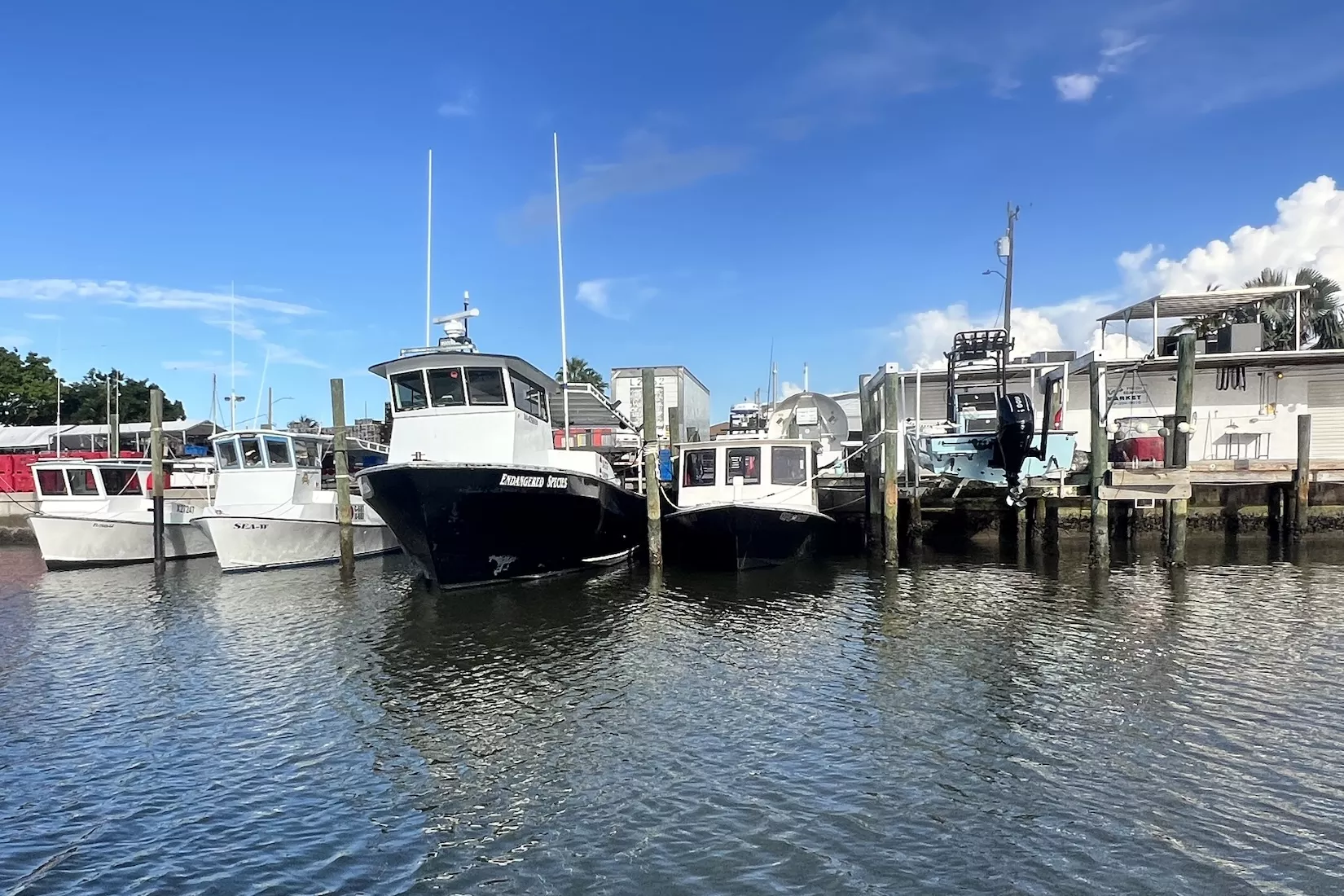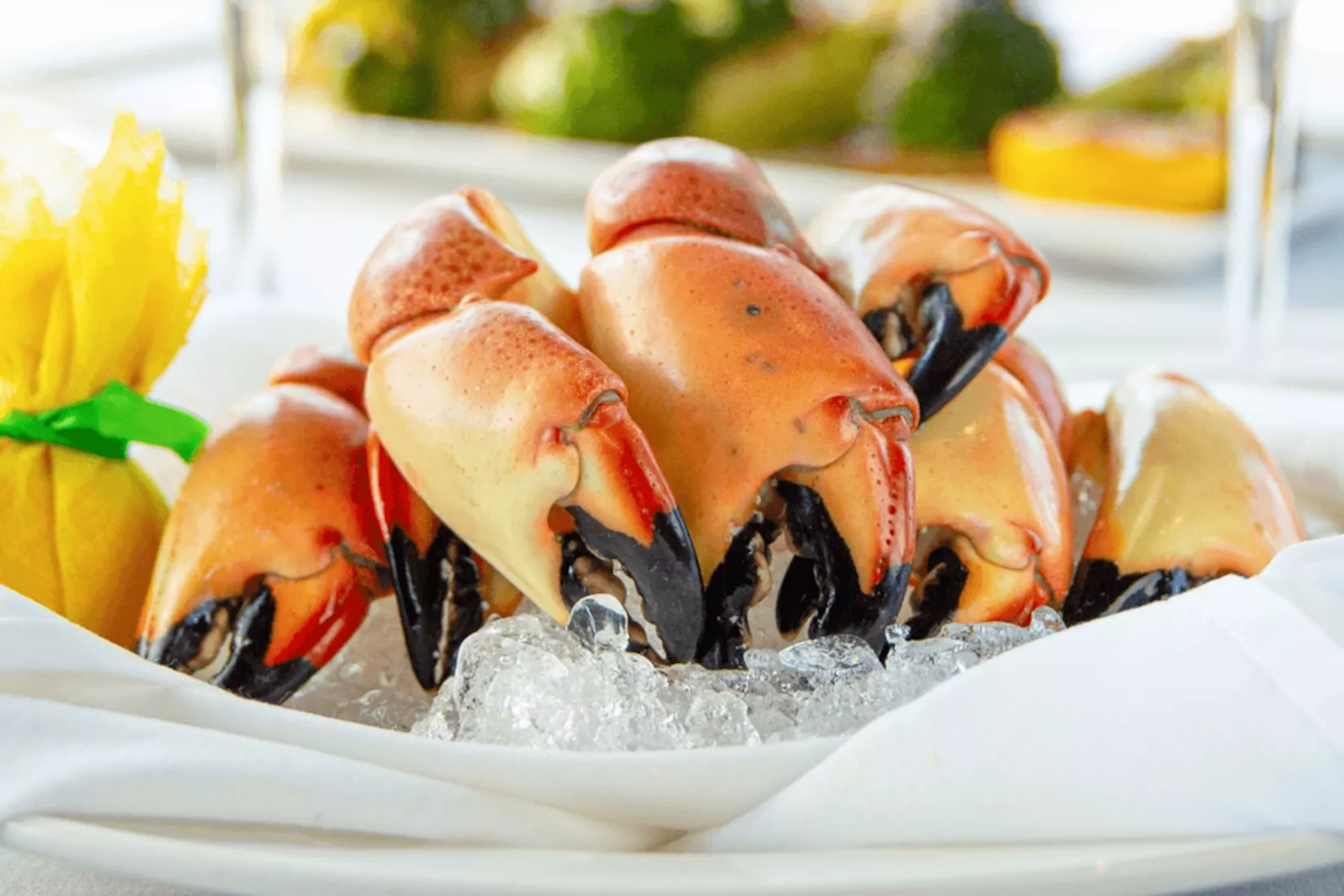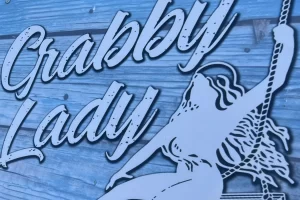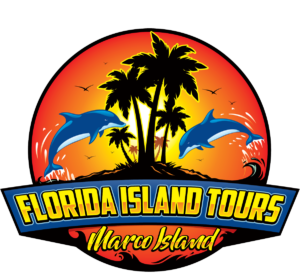Why stone crabs define Southwest Florida
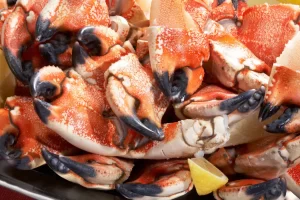 Stone crabs mark the start of Florida’s tastiest season. Families in Naples and Marco Island plan whole evenings around claws. The meat tastes sweet, clean, and lightly briny with mineral snap. The ritual feels festive yet simple, which keeps it timeless. You crack, dip, and trade grins across a paper-covered table. Visitors quickly see why locals wait all year for opening day. The flavor and the tradition create a seasonal rhythm everyone loves.
Stone crabs mark the start of Florida’s tastiest season. Families in Naples and Marco Island plan whole evenings around claws. The meat tastes sweet, clean, and lightly briny with mineral snap. The ritual feels festive yet simple, which keeps it timeless. You crack, dip, and trade grins across a paper-covered table. Visitors quickly see why locals wait all year for opening day. The flavor and the tradition create a seasonal rhythm everyone loves.
When is stone crab season?
Florida’s stone crab season runs from October 15 through May 1 in state waters. The fishery closes on May 2 to protect stocks for future years. Only claws may be harvested, and egg-bearing females are off limits. The minimum legal claw size is 2⅞ inches, measured at the largest point. Recreational bag limits cap take at one gallon per person. Vessels cannot exceed two gallons total per trip under the recreational rules. These details matter when planning a family feast or weekend buy.
Why the rules matter
Regulations balance dinner tables with long-term fishery health. Scientists continue studying survival after claw removal and handling. Results show technique and care change outcomes for released crabs. Induced autotomy improves survival compared with a forced break. Research and careful practice help the fishery remain resilient. Consumers win when harvesters follow best practices at sea. Sustainable habits today support peak seasons tomorrow.
The complete history of Florida stone crabs
Stone crab went from bycatch to icon in just a century. The story begins in early-1900s Miami Beach with Joe and Jennie Weiss. They opened a small seafood place that later became Joe’s Stone Crab. In the 1920s, Joe’s popularized chilled claws with a mustard sauce. That service style spread across Florida and then around the nation. Naples and Marco Island embraced the ritual as the fishery grew. Today, claw season anchors winter dining culture across the coast.
Inventiveness helped the fishery scale beyond local tables. Processors learned how to cook, chill, and transport claws quickly. That speed preserved the delicate texture during statewide distribution. Cold service became the signature because it protects tenderness. Media attention turned the opening week into a regional holiday. Restaurants still honor the original mustard-sauce tradition with pride. The result blends nostalgia, technique, and tight logistics each fall.
Festivals strengthened the cultural thread in coastal towns. Everglades City leaned into its role as “Stone Crab Capital.” The winter Everglades Seafood Festival now draws big family crowds. Music, rides, and seafood stalls showcase the local fleet’s work. The celebration keeps heritage visible for the next generation. Families plan trips around festival weekends and first-claw dinners. That cycle keeps the story fresh while honoring the founders.
Where Naples and Marco Island fit into the Stone Crab Story
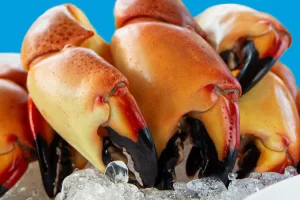
Naples: from downtown elegance to neighborhood markets
Naples treats claws like seasonal couture for seafood lovers. Downtown spots plate pre-cracked claws with crisp salads and wines. Neighborhood markets and raw bars handle the everyday family runs. Some venues emphasize “trap to table within 24 hours” bragging rights. That focus keeps texture pristine and flavor bright on busy nights. Parents appreciate easy parking and quick service during school breaks. Everyone appreciates a clean crack, cold claws, and lemon wedges.
Marco Island and Goodland: dockside ease, island energy
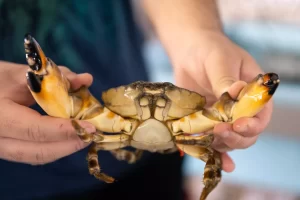
The local scene favors paper-covered tables and outdoor laughs with friends. Everything points back to freshness, ice, and a classic mustard dip. The islands make the ritual feel relaxed, local, and wonderfully repeatable.
How stone crabs are harvested
Harvesters set baited traps on sandy or shell bottom near travel lanes. Crews sort, measure, and remove only legal claws at haul-back. They return live crabs to the water with careful technique and speed. Clean breaks support regeneration and better survival after release. Fast icing preserves texture before cooking at the dock or plant. That chain of custody keeps flavor sweet when claws reach your plate. Each step reflects decades of trial, error, and refinement.
Do stone crabs really regrow claws?
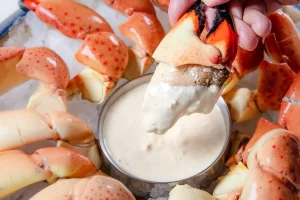
How to buy the freshest stone crab claws
Ask when the claws were cooked and how long they stayed on ice. Fresh claws feel heavy for size and smell clean like the sea. Shells should show a bright boil and intact, tight joints. Pre-cracked claws help families and reduce mess at the table. Order size grades based on budget, appetite, and photo goals. Plan pick-ups earlier on weekends to avoid sellouts. Keep a cooler with ice in your trunk during errands in peak season.
What size Stone Crabs should you order?
Medium stretches budgets and delivers plenty of sweet bites. Large balances fewer shells with thicker, hearty nuggets. Jumbo feels celebratory and suits special nights or guests. Colossal turns dinner into an event and a camera moment. Plan ½–1 pound per adult if claws share the plate. Bump to 1–1½ pounds when claws are the main course. Kids often share a pound between two without any drama.
 How to serve stone crabs at home
How to serve stone crabs at home
Serve claws well-chilled on crushed ice to protect texture. Pre-crack before guests sit down for an easy, gracious flow. Offer lemon wedges and a classic mayonnaise-Dijon mustard sauce. Keep towels, shell bowls, and small forks within quick reach. Add a bright salad, roasted potatoes, or corn for sides. Pour dry white wine or sparkling water with citrus. Finish with Key lime pie to stay in full Florida mode.
Classic mustard sauce, simplified
Whisk mayonnaise, Dijon, lemon juice, Worcestershire, and sugar. Add a pinch of salt, then chill for twenty minutes. The acidity brightens the crab’s gentle sweetness perfectly. Families often keep a second bowl mild for kids. Hosts sometimes add a tiny hit of horseradish. The goal is balance, not domination, over delicate meat. Cold sauce and colder claws make the combo sing.
How to crack claws without the mess
Wrap each claw in a clean kitchen towel for safe tapping. Use the flat of a wooden spoon, not a hammer, for control. Tap, rotate, and tap again to open seams without crushing meat. Pry gently at the joints to lift out big, intact chunks. Keep a discard bowl ready to corral shells and splinters. Work slowly and let the tool, not force, do the job. Pre-crack in the kitchen to keep tabletops party-pretty.
Dining out for Stone Crabs in Naples and Marco Island
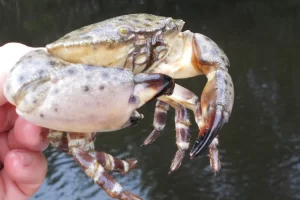
Seafood sustainability, simplified
Stone crabs are unusual because the animal lives after harvest. Survival depends on clean technique, handling, and water temperature. Minimum sizes and seasonal closures protect brood stock. Managers adjust rules as new science clarifies best practices. Responsible diners ask questions and avoid food waste at home. That partnership keeps boats working and plates full for years. Good stewardship tastes as good as any sauce you can make.
10 Delicious Stone Crab Fun Facts (Florida style) 🦀👇
-
#Nerdy name
Florida’s stone crab is Menippe mercenaria. Its cousin, Menippe adina, lives in the north/west Gulf; the two overlap and even hybridize.
-
Almost all come from Florida
Roughly 98–99% of U.S. stone crab claws are harvested in Florida. It’s one of the state’s most valuable fisheries, contributing around $30–$41M annually.
-
The claw-only fishery
Uniquely, harvesters take claws and return the crab alive so it can regenerate the limb over subsequent molts.
-
Size (and season) rules
Legal claws must be at least 2⅞ inches, measured tip to joint. Season runs Oct 15–May 1. Those rules protect the stock (egg-bearing crabs are off-limits, too).
-
Super moms
Female stone crabs are prolific—individual clutches can range from ~160,000 up to ~1,000,000 eggs, and large females can produce multiple clutches per year.
-
How they’re caught
Crabbers set baited traps near rocky edges, reefs, and jetties; traps are worked in daylight and must meet strict design limits (sizes, throats, etc.).
-
Ladies outlive the lads
Females generally live a bit longer (often ~8–9 years) while males grow slightly larger but with more variable growth. (Fun biology detail you’ll hear from many fishery biologists and captains.)
-
Predators & favorite foods
Top predator? Octopus—those tentacles pin claws fast. Stone crabs dine on oysters, small mollusks, worms, and scavenged bits along the bottom.
-
How many claws per season?
FWC tracks both pounds and the number of claws in its public landings database; totals swing year to year and reach into the tens of millions of claws statewide. You can check the current “Statewide: Numbers” report for the latest count.
-
How big is the harvest (by weight)?
Statewide landings typically run ~2.0–3.5 million pounds of claws per season: peaks around 3.5M lbs (2000–01); some strong recent years near 2.9–3.0M lbs; lows around ~2.0M lbs.
Stone Crab Captain’s Tip (from Florida Island Tours)
Order pre-cracked claws for kids and grandparents. Smiles last longer when effort stays low. Our favorite place to grab some is right here in Goodland at Kirk’s Seafood.
Festival vibes and family traditions
Everglades City throws one of Florida’s great seafood parties each winter. The Everglades Seafood Festival brings music, rides, and big flavor. Families make it a tradition before or after a beach morning. Many visitors pair a wildlife tour with evening claws and pie. The festival showcases harvesters who work the nearby island maze. It also educates guests on sustainability and seafood heritage. Plan lodging early for festival weekends during peak demand.
Naples and Marco Island Stone Crab planning playbook
Build a perfect stone crab “claw day”
Start with a relaxed beach walk or a dolphin outing. Grab lunch light to save room for a claws-forward dinner. Call a market by midafternoon to check sizes and inventory. Pick up claws with extra ice and drive straight to the lodging. Pre-crack, chill, and set the table before sunset colors arrive. Wrap the night with Key lime pie and a family toast. You will sleep happily and plan a second round tomorrow.
Where the experiences cluster
Downtown Naples offers polished dining and strollable after-dinner options. Waterfront neighborhoods provide views and easygoing service styles. Marco Island delivers family-friendly patios close to the beach. Goodland adds working-dock character and grab-by-the-pound practicality. Everglades City connects visitors directly with the fishing heritage. The short drives between towns make sampling effortless. Mix settings to see how each place tells the same story.
Where to eat Stone Crabs
Here are 10 great places in Southwest Florida to crack into fresh stone crab claws—by area, with what they’re best for and where to find them during season (Oct 15–May 1):
Kirk Fish Company — Goodland
Historic market (est. 1950) that re-opens with the season; sells cracked or whole claws in multiple sizes and offers how-to tips.
 Crabby Lady — Goodland
Crabby Lady — Goodland
Crabby Lady — Goodland (Marco area)
Waterfront, low-key tiki vibe with in-season stone crab claws, cold drinks, and live-music energy. Easy to reach by car or boat; hours are typically Tue–Sat 11–6, Sun 11–5 (closed Mon).
crabbyladygoodland.com
Little Bar — Goodland
Beloved waterfront haunt since the late ’70s; serves locally sourced stone crab in peak season with live-music vibes.
littlebargoodland.com
Triad Seafood Market & Café — Everglades City
Waterfront, casual, and famous for “all-you-can-eat” stone crab when offered; crack on the dock and watch the Barron River go by.
City Seafood — Everglades City
Old-Florida fish house with a market and simple riverside tables; fresh claws “when in season” and take-home seafood.
cityseafood1.com
Grimm’s Stone Crab — Everglades City
Family operation selling claws straight from local boats; retail pickup only at their Everglades City market.
crabsr.us
Captain & Krewe Seafood Market & Raw Bar — Naples (Old Naples)
Market + raw bar known for multiple claw sizes (up to super-colossal) and a strong local following near 5th Ave.
cknaples.com
Swan River Seafood — Naples
The restaurant and full market typically list “Local Stone Crabs” by size during the season for dine-in or take-home.
www.swanriverseafood.com
Kelly’s Fish House Dining Room — Naples
Classic waterfront spot specializing in stone crabs during season; occasionally runs all-you-can-eat medium claws.
kellysfishhousediningroom.com
Pinchers (Naples) (Marco Island)
Casual chain sourcing claws from Island Crab Company; reliable seasonal claws and a big Naples stone crab fest presence.
www.pinchersusa.com
Stone Crab Dining – Booking and timing tips
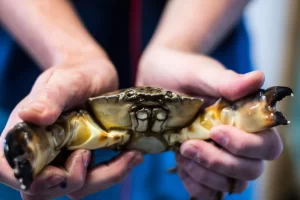
Quick FAQ for stone crab trip planners
When is the best time to go?
Opening week offers excitement, while mid-season offers balance. Late season can mean value before the May 1 cutoff. Weather and tides shape supply, so check in advance. Families find weeknights easier for seating and parking. Early dinners reduce wait times with younger kids. Pre-cracking orders speed everything at the table.
Are claws served hot or cold?
Most Floridians serve claws chilled with mustard sauce. Warm butter appears sometimes, but chilled remains the classic. Cold service protects texture and keeps flavors precise. Restaurants follow that lead across Naples and Marco Island. Home dinners mimic the style with ice and lemon wedges. The pairing tastes timeless because it works. Tradition survives because it delivers.
How many claws per person?
Plan half to one pound per adult with sides. Increase to one to one-and-a-half pounds as the main event. Kids often share a pound between two without fuss. Size grade changes in the math portion, so ask your market. Pre-cracking reduces waste by protecting larger nuggets. Leftovers taste great the next day when kept cold.
Where do local claws come from?
Traps line the nearshore Gulf and Ten Thousand Islands. Harvesters work channels, passes, and edges near moving water. Naples, Marco Island, Goodland, and Everglades City anchor the scene. The regional fleet keeps restaurants and markets well supplied. It feels local because the boats work just offshore. That closeness makes freshness a daily expectation.
Pairings and sides that work
Keep flavors bright and let the crab shine through. Citrus salads, roasted potatoes, and blanched green beans fit well. Corn on the cob keeps kids happy and quiet for minutes. Choose dry whites or sparkling water with lemon slices. Fresh breads help with sauce and conversation breaks. Key lime pie closes the loop on a perfect Florida dinner. Simple wins every time with delicate shellfish.
Final word on Stone Crabs
Stone crabs define the Naples and Marco Island season. The tradition blends flavor, family, and science-backed stewardship. Respectful harvest keeps plates full and crabs thriving. Simple prep turns dinner into a celebration everyone remembers. Plan between October and May for peak freshness and fun. Then crack, dip, and savor every chilled bite together. Those moments become the stories families keep repeating.
— Florida Island Tours 🐬🌴



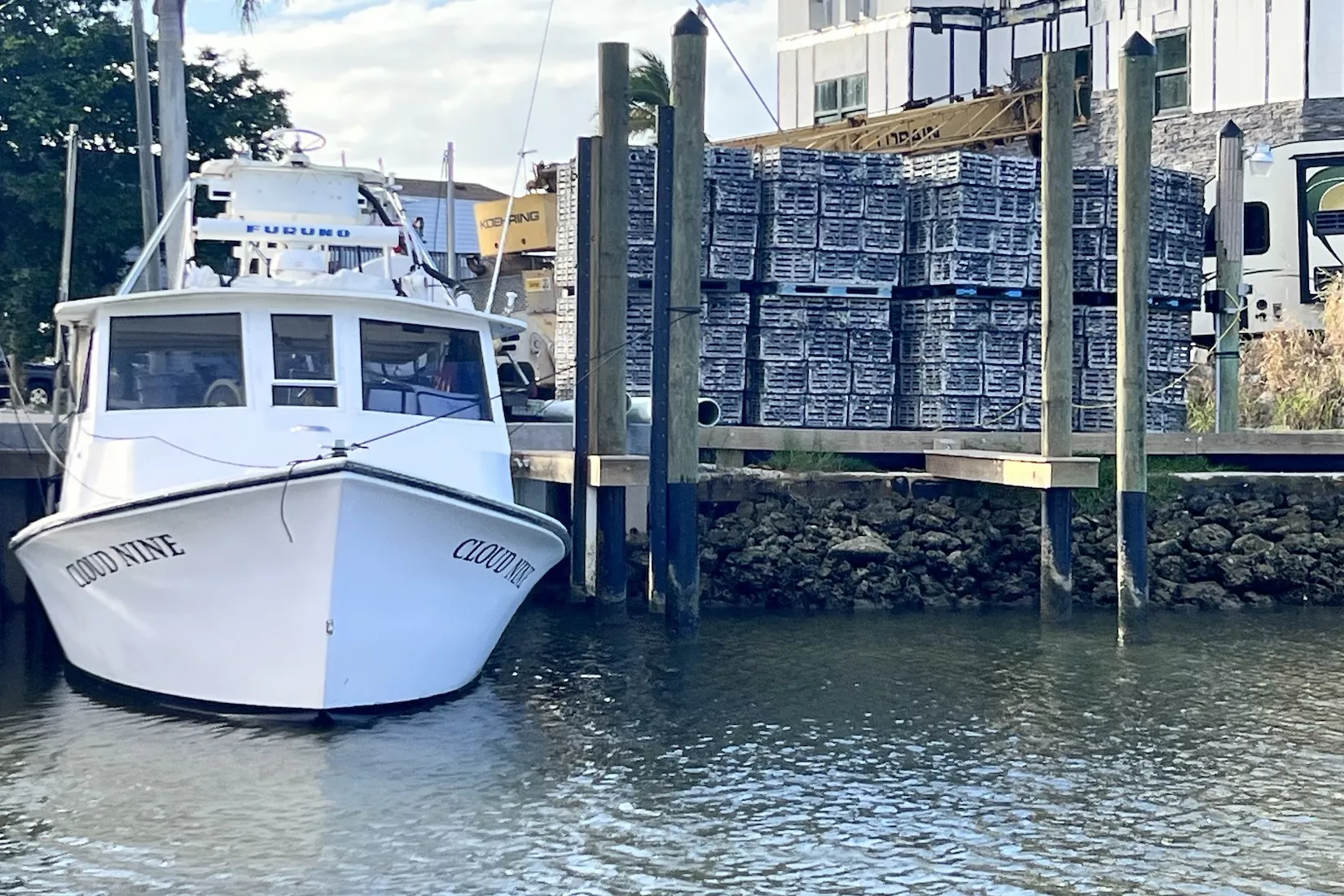
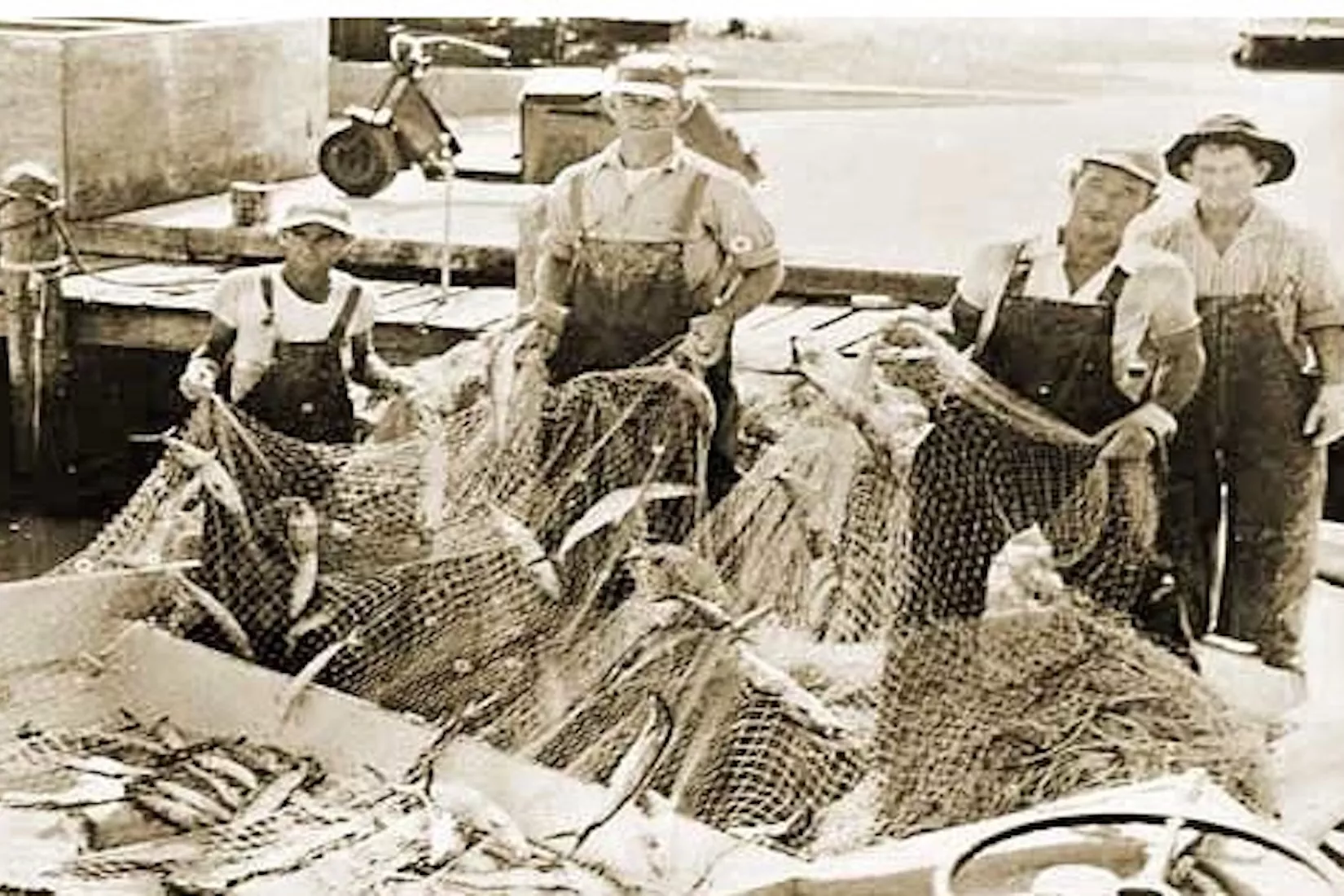
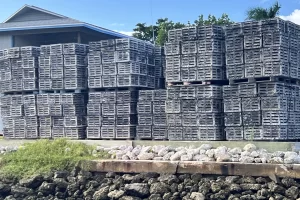 How to serve stone crabs at home
How to serve stone crabs at home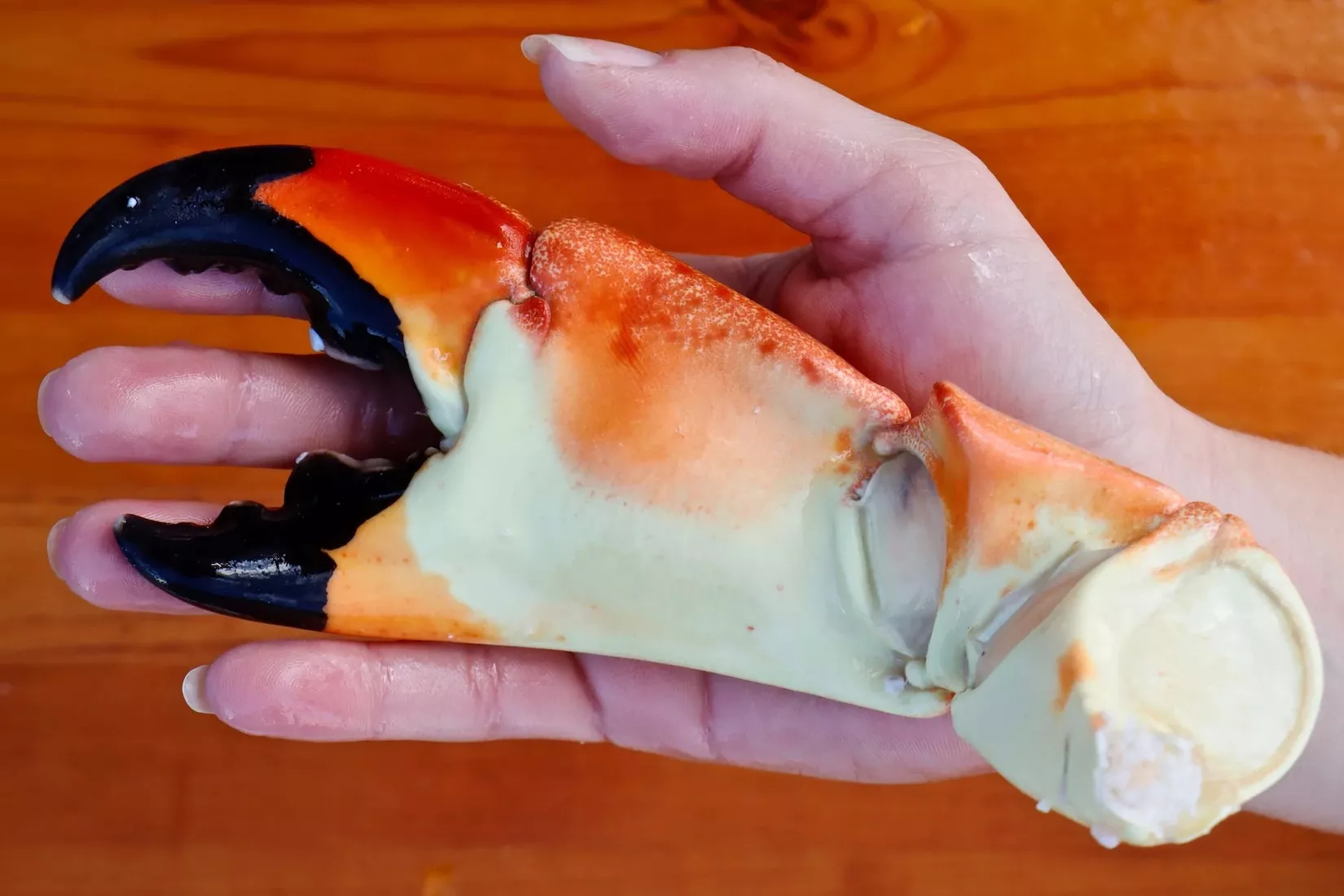
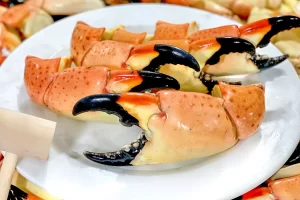 Crabbers set baited traps near rocky edges, reefs, and jetties; traps are worked in daylight and must meet strict design limits (sizes, throats, etc.).
Crabbers set baited traps near rocky edges, reefs, and jetties; traps are worked in daylight and must meet strict design limits (sizes, throats, etc.).